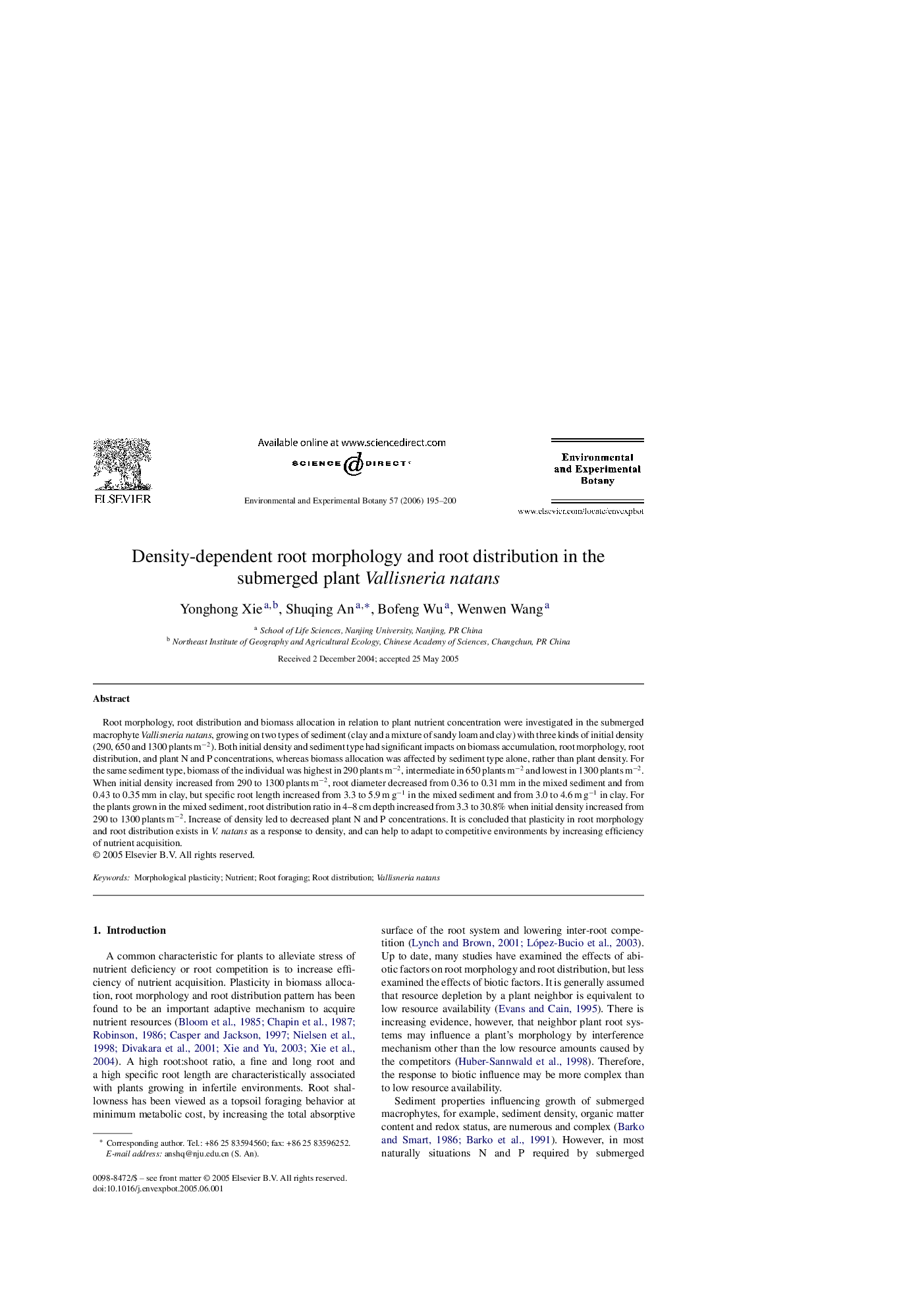| Article ID | Journal | Published Year | Pages | File Type |
|---|---|---|---|---|
| 4555582 | Environmental and Experimental Botany | 2006 | 6 Pages |
Root morphology, root distribution and biomass allocation in relation to plant nutrient concentration were investigated in the submerged macrophyte Vallisneria natans, growing on two types of sediment (clay and a mixture of sandy loam and clay) with three kinds of initial density (290, 650 and 1300 plants m−2). Both initial density and sediment type had significant impacts on biomass accumulation, root morphology, root distribution, and plant N and P concentrations, whereas biomass allocation was affected by sediment type alone, rather than plant density. For the same sediment type, biomass of the individual was highest in 290 plants m−2, intermediate in 650 plants m−2 and lowest in 1300 plants m−2. When initial density increased from 290 to 1300 plants m−2, root diameter decreased from 0.36 to 0.31 mm in the mixed sediment and from 0.43 to 0.35 mm in clay, but specific root length increased from 3.3 to 5.9 m g−1 in the mixed sediment and from 3.0 to 4.6 m g−1 in clay. For the plants grown in the mixed sediment, root distribution ratio in 4–8 cm depth increased from 3.3 to 30.8% when initial density increased from 290 to 1300 plants m−2. Increase of density led to decreased plant N and P concentrations. It is concluded that plasticity in root morphology and root distribution exists in V. natans as a response to density, and can help to adapt to competitive environments by increasing efficiency of nutrient acquisition.
